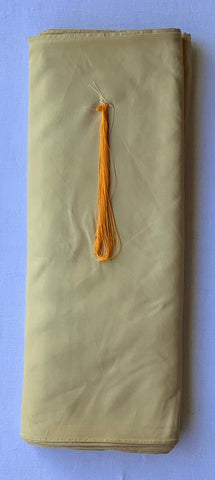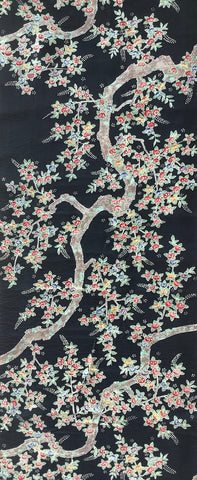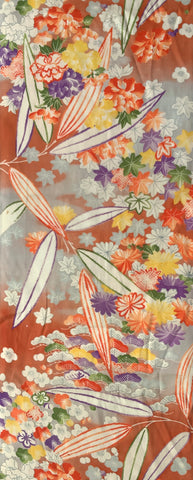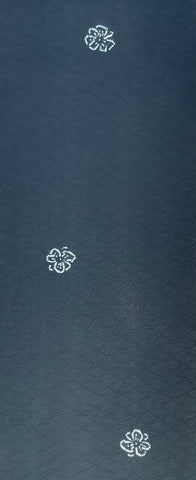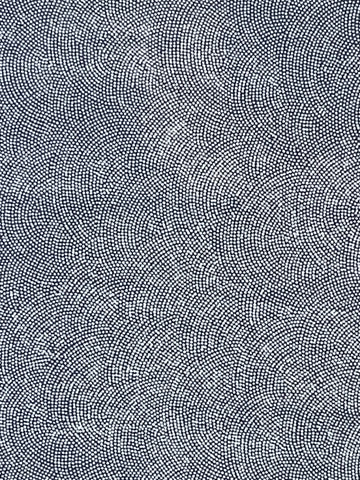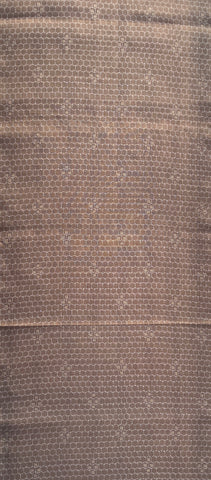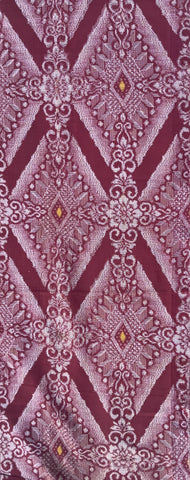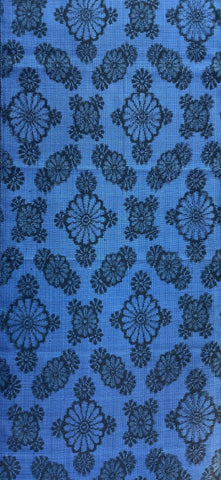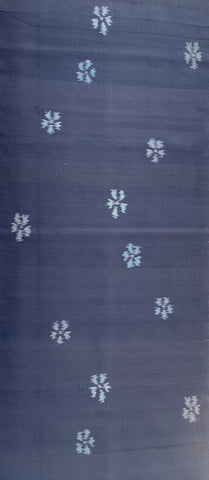78152:1980s Mud-Dyed Japanese Silk Doro-Ohshima Tsumugi, 37in. AraiHari Stripes Bands
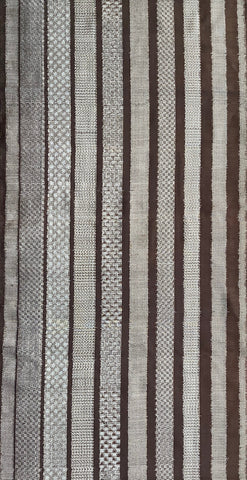
Catalog# 7815-2
1980s Rare Japanese Textiles:
Doro (Mud-dyed) Ohshima Tsumugi
(pongee) Silk Fabric
Vertical Stripes/Bands, Pixelated, Geometrics
Width: 14.75 inches / 37.47 cm
Length: 37 inches / 93.98 cm
US$15.00 per piece
Plus Shipping

Item Details and Description
Fabric Description Details:
This thin, lightweight piece is a complex pattern of varying widths stripes and bands running in parallel vertically; this type of arrangement uses very dark brown, lighter & medium tone browns, as well as off-white (appears as gray from a distance); fabric is translucent and a bit stiff; .25 inch /6.35 mm selvage on both sides; the fields between the stripes/bands are all different, progressing from right to left, smallest 1/8 inch (.125") largest band is 3/4 (.75") inch / 19.05 mm, with tiny geometric patterns rendered in a pixelated manner; quite remarkable dyework intricate patterns; please see closeups.
In these older mud-Ohshima fabrics, note how the motifs are rendered by the pixelated fields throughout all the various geometric patterns, this pixelation is common in Tsumugi due to the weaving methods, but the lighter fabric shows the pixelation a bit more (please see closeups); The fabric is the same on both sides; ; Kimonos made from Doro-Ohshima Tsumugi are held in high regard among kimono traditionalists in Japan, given that the Imperial family has been known to wear such fabric in Royal kimonos.
Colors: Please use our text color descriptions to complement your sense of the fabric due to differences in contrast and color on different devices.
BACKGROUND JAPANESE TEXTILES CULTURAL NOTES:
There are various types of older Ohshima Tsumugi silk that involve tsumugi using mud, indigo, and grass or plants in the dyeing process.
To learn about the older Ohshima textiles, there are details on that aspect of Japan's special pongee silk-making process which can be found on the National Foundation for Promoting the National Costume of Japan website. The site explains the natural plant dyes and mud etc. used in making older (1960s and earlier) Ohshima Tsumugi silks, quoted here:
YokoDana Kimono
7973: 1990s Deadstock Roll(12yds)Japanese Cotton Solid Indigo Liner Fabric ForSashiko
$ 45.00
YokoDana Kimono
79722: 1980s Japanese Kimono Silk Fabric,47n.Pc.AraiHari,Komon Small Flowers on Black
$ 15.00
YokoDana Kimono
79721: 1980s Japanese Kimono Silk Fabric,62in.Pc.AraiHari,Komon Small Flowers on Black
$ 20.00
YokoDana Kimono
7968: 1980s Japanese Kimono Silk Fabric,59in.Pc.AraiHari,PeachTree, Leaves,Fruit
$ 20.00
YokoDana Kimono
7967 1930s-50s Japanese Kimono Silk Fabric Piece 58", ornate, floral Arai-Hari
Regular price $ 22.00 Sale price $ 18.00
YokoDana Kimono
7965:1980s Japanese Kimono Silk Fabric, Arai-Hari, 67in.Pc. Black w/white flower accents
$ 20.00
YokoDana Kimono
7964-2: 1980s Japanese Kimono Silk Fabric, Arai-Hari, 40in.Pc. Pixelated Waves
$ 15.00
YokoDana Kimono
7964-1: 1980s Japanese Kimono Silk Fabric, Arai-Hari, 62in.Pc. Pixelated Waves
$ 20.00
YokoDana Kimono
7962:1960s Mud-Dyed Japanese Silk Doro-Ohshima Tsumugi, Geometric,59n. AraiHari
$ 20.00
YokoDana Kimono
7954:1960's Japanese Silk Ohshima Tsumugi, 58in. Arai-Hari,Tortoise Shell Pattern
$ 20.00
YokoDana Kimono
7961:1960's Japanese Silk Ai-Ohshima Tsumugi, 55", Blue-Black Diamond Grid
Regular price $ 25.00 Sale price $ 12.50
YokoDana Kimono
7960:1960's Japanese Silk Ohshima Tsumugi, 58", Burgundy-Red, Floral Medallions
$ 25.00







